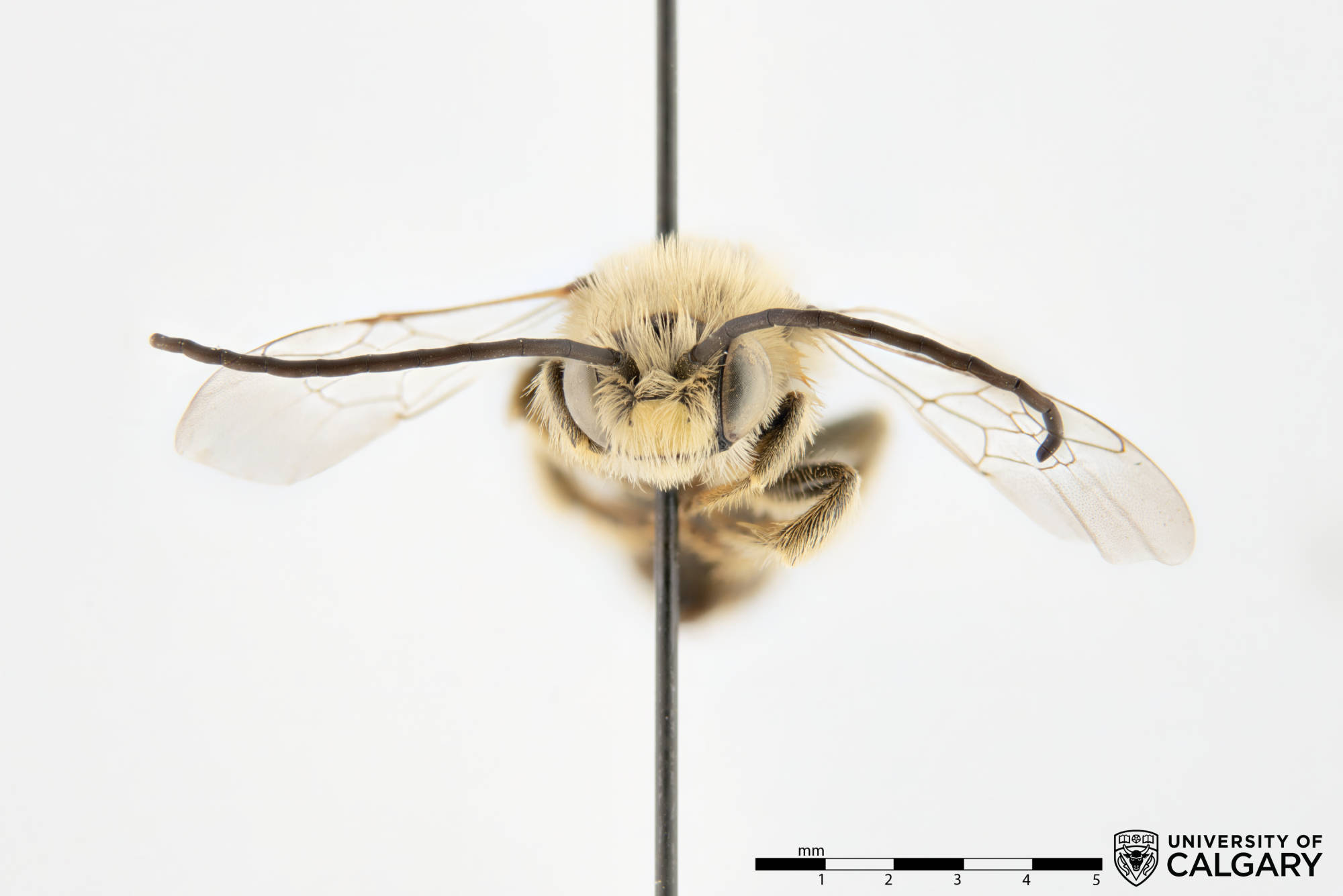Functions:
Process Information – Sense Signals / Environmental Cues – Sound and Other Vibrations
Maintain Community – Cooperate – Communicate within Species
The antennae of bees serve the same purpose as a nose in humans; they’re filled with receptors for chemical odorants in the environment and help the bee smell the world.
The antennae of male bees are often much longer than their female counterparts. Male antennae have an extra segment and the segments themselves have more length.1 This is because male antennae are specialized to pick up the subtle scent of female pheromones. Some honeybee workers have been shown to smell their Queen from up to 60 meters away.2
The receptors on the antennae are divided into four categories: plates, pegs, hairs and pits. Plates are receptors for chemicals and light, pegs and pits are for smelling and hairs for touch. The arrangement of the sensors is very specific, with a tuft of hairs for feeling texture at the tip of the antennae and the majority of the receptors related to smell found on the last eight sub-segments. A male bee can have up to 100x the number of sensors on his antennae than a female can.3
Another receptor, the Johnston’s organ, is found inside the antennae, near the head. It detects movement and vibration around the antennae and has a variety of applications from allowing the bee to judge its speed, as well to detect electric fields. Bumblebees, for instance, can use the mechanoreceptors on their antennae to sense electric field strengths as small as 15.3 Vm-1.4


A male (left) and female (right) specimen of Melissodes confusus, from the University of Calgary Invertebrate Collection. Note how the antennae of the male are nearly twice the width of his head.


A male (left) and female (right) specimen of Melissodes rivalis from the University of Calgary Invertebrate Collection. Note how the antennae of the female are just longer than the width of the head, while the antennae of the male are far longer than the width of the head.
This page was created by Holly Kerstiens in collaboration with Dr. Mindi Summers, Dr. Marjan Eggermont, Dr. Jess Vickruck, Lincoln Best and Dr. Alex Ralevski as part of an independent studies project in winter 2019. This information is also available as a collection on AskNature.org.
Sources
1 The Bees of the World
Hopkins Fulfillment Service. 2007.
Michener, C.D.
2 How Drones Find Queens: Odorant Receptor for Queen Bee Pheromone Identified
University of Illinois at Urbana-Champaign. 2007.
Robertson, H.
3 A Quick-Start Guide to Honey Bee Antennae
American Bee Journal. 2018.
Burlew, R.
4 Mechanosensory hairs in bumblebees (Bombus terrestris) detect weak electric fields
PNAS. 2016.
Sutton, G.P., Clarke, D., Morley, E. L. & Robert D.
